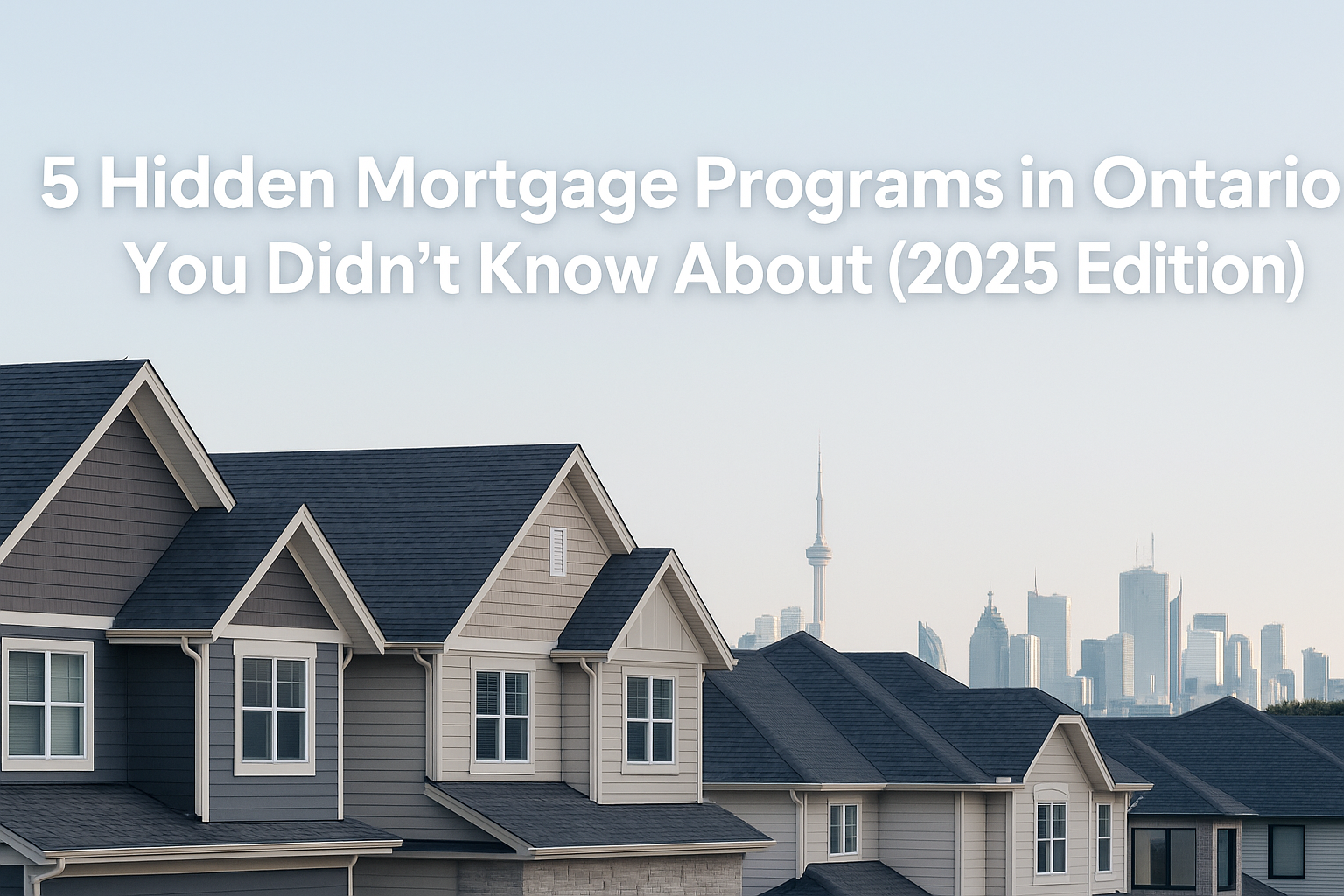Should You Lock In or Stay Variable? 2025 Mortgage Rate Strategy Explained

Introduction
Interest rates are finally coming down — and Canadian homeowners are asking the same question: should I lock in a fixed rate now or stay variable? In 2025, the answer isn’t black-and-white. It depends on your risk tolerance, timeline, and what the Bank of Canada does next. Here’s a clear, local breakdown to help you make the right move for your Ontario mortgage.
1️⃣ What’s Happening with Rates Right Now
- After holding steady through mid-2025, the Bank of Canada has cut its policy rate to 2.25 %, triggering a wave of refinance applications.
- Five-year fixed rates have settled around 3.59 % – 3.79 %, while variable options hover closer to 3.25 % but can fluctuate month to month.
- Experts expect one more cut by spring 2026, but inflation pressures could limit how low they go.
(Source: RBC Economics, BNN Bloomberg, Mortgage Alliance data — November 2025)
2️⃣ Fixed Rates — Peace of Mind, But at a Premium
Pros:
✅ Stable payments for the entire term.
✅ Easier budgeting for families and investors.
✅ Protection if rates rise again in 2026.
Cons:
⚠️ Higher starting rate vs variable.
⚠️ Costly penalties if you break early — especially in Canada (interest rate differential fees can be huge).
⚠️ Less flexibility to refinance or switch lenders.
Best for: First-time buyers on tight budgets, or those who sleep better knowing their payment won’t change.
3️⃣ Variable Rates — Flexibility and Potential Savings
Pros:
✅ Usually cheaper upfront.
✅ Easier to refinance if rates drop further.
✅ Historically outperforms fixed over long periods (about 90 % of the time per BoC studies).
Cons:
⚠️ Payment fluctuations can stress cash flow.
⚠️ If rates creep up again in 2026, your monthly cost rises too.
⚠️ Requires discipline and financial cushion.
Best for: Borrowers who can handle some volatility and want to capitalize on short-term rate cuts.
4️⃣ Hybrid and Blend Options — The Smart Middle Ground
Many lenders are now offering split mortgages (50 % fixed, 50 % variable). This approach lets you lock part of your rate while still benefiting if variable drops.
🧮 Example: On a $600 K mortgage with 3.6 % fixed / 3.2 % variable, your average payment lands around $3,000 — and you’re partly protected against swings.
5️⃣ How to Decide — Your Personal Rate Strategy Checklist
✅ How long do you plan to stay in this home? ( < 3 yrs = variable may win )
✅ Do you sleep better with stability or flexibility?
✅ Could you afford a $200 – $300 monthly increase if rates rose 1 %?
✅ Are you planning a refinance or move soon?
Your answers point the way — and your broker (👋 that’s me) can model each scenario in minutes.
6️⃣ Ontario Market Lens – What We’re Seeing Locally
- Refinance and renewal clients in Barrie, Pickering, and Bradford are split roughly 60/40 between fixed and variable.
- Investors are leaning variable to stay liquid and capitalize on potential rate drops in early 2026.
- First-time buyers still prefer fixed for budget certainty, but more are opting for 3-year terms instead of 5-year locks.
7️⃣ Final Word: Your 2025 Playbook
There’s no universal answer — only a personalized one. The right move depends on your timeline, cash flow, and risk comfort. What you don’t want to do is decide blindly. Run the numbers with a professional who knows both national policy and local lender trends.
CTA (Include Buttons):
Need help deciding what’s best for you?
📞 Call (437) 961-0004 or Apply Now to see which rate strategy fits your budget and future plans.



